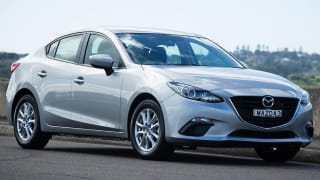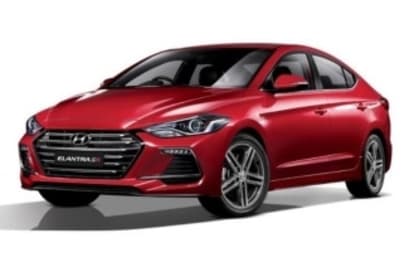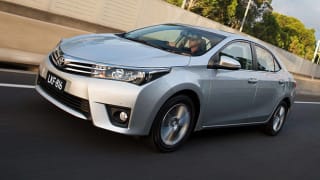You have to hand it to Hyundai. A decade or so ago the South Korean automobile manufacturer churned out cheap and cheerful cars in which refinement was not a strong suit.
Now, with the sixth generation of the Hyundai Elantra not only has refinement reached new heights, quality has followed while still maintaining its affordable status. And design no longer takes a back seat with Hyundai's sleek design philosophy there for all to see.
Explore the 2016-2017 Hyundai Elantra range
The latest Elantra is not lacking in specification, with two levels – Active and Elite (Premium has been dropped) – offering buyers choices not often found at this price point.
At $21,490, the Active is marginally more expensive than the car it replaces but includes more than $2000 worth of added value, while the Elite carries $2000 to $2500 extra value.
We were presented with the mid-range Active automatic, at $23,790, plus on-road costs, to evaluate. It provided a clear insight into the Hyundai company philosophy.
Design
Striking new looks set the tone of the new Elantra, a key feature being a more assertive front end than before thanks to Hyundai's ‘family signature' hexagonal radiator grille, slimline headlamps and LED daytime running lights. From the side, sweeping character lines work well.
Projector beam foglamps are standard across the range, while an impressive 0.27 drag coefficient is attained with the help of front wheel ‘air curtains' – derived from the Sonata Hybrid – that help channel airflow around the wheels to minimise turbulence and wind resistance.
Other wind cheaters include strategically positioned underbody covers, a new-design lower rear bumper spoiler and longer boot lid.
Standard is the Apple CarPlay system, including access to Siri voice-activation.
Elantra's stablemates, Genesis, Sonata and Tucson play their part with the Hyundai's passenger cabin featuring driver-focused surroundings in which main controls are arranged in groups according to function – multimedia controls at the top, climate functions below on a stack angled towards the driver, and drive system operations on or behind the steering wheel.
Occupants are offered more shoulder room front and rear (up 7 mm and 12mm respectively) and more rear headroom (up 4mm) and, at 59mm, a heap more leg room. Ambience is enhanced by alloy-look air vent surrounds and metallic-painted dashboard and door trim inserts.
Features
A touchscreen multimedia system with 7.0-inch TFT LCD display is now standard in both Active and Elite, offering wide-ranging connectivity, including USB, Aux, digital iPod and Bluetooth.
Also standard is the Apple CarPlay system, including access to Siri voice-activation. A six-speaker audio has steering wheel-mounted controls.
Engines
Hyundai's naturally-aspirated 2.0-litre four-cylinder petrol engine has taken over from the previous Elantra's 1.8 motor and is paired with either six-speed manual (Active only) or six-speed automatic transmissions (Active and Elite).
Maximum power of 112kW and 192Nm maximum torque are up two per cent and eight per cent, respectively, on the outgoing Elantra. Low-end torque has been improved significantly, though its peak at 4000rpm is very high.
The electronically controlled six-speed automatic transmission, available in both Active and Elite, features a lock-up torque converter and sequential manual shift mode.
Safety
Six airbags (driver and front passenger, driver and front passenger side (thorax), and full length curtains) take care of passive safety and are standard across the Elantra range.
Extensive Australian testing and development has resulted in outstanding ride and handling.
Active safety in all variants is in the hands of electronic stability control, including traction control, anti-lock brakes, electronic brake force distribution, brake assist and vehicle stability management. Hill start assist helps in setting off on an incline.
LED daytime running lights are augmented by automatic dusk-sensing headlamps, while rear-view camera and rear parking assist come to the aid when reversing.
Driving
There may be what seem only minor increases in cabin dimensions of the new Elantra, but there is a feeling of a lot more space for occupants. Most appealing.
Cloth seats are adequate, the driver wins with height adjustment. There's a tilt and telescopic steering column and one-touch turn signal with three flashes.
The 2.0-litre four-cylinder engine musters up 112kW of power at 6200revs. Off the mark the Elantra is no sprinter. Fuel consumption on test, at 10.1L/100km, turned out to be spot on with the maker's mark around town. Our 4.8L/100km on a motorway run beat Hyundai's figure of 5.5 easily.
With discs all round, stopping was firm and responsive, while steering weighed in with the required driver confidence at higher speeds.
Extensive Australian testing and development, a regular feature of Hyundai product, has resulted in a stronger, stiffer chassis, hence outstanding ride and handling of the new Elantra.

















